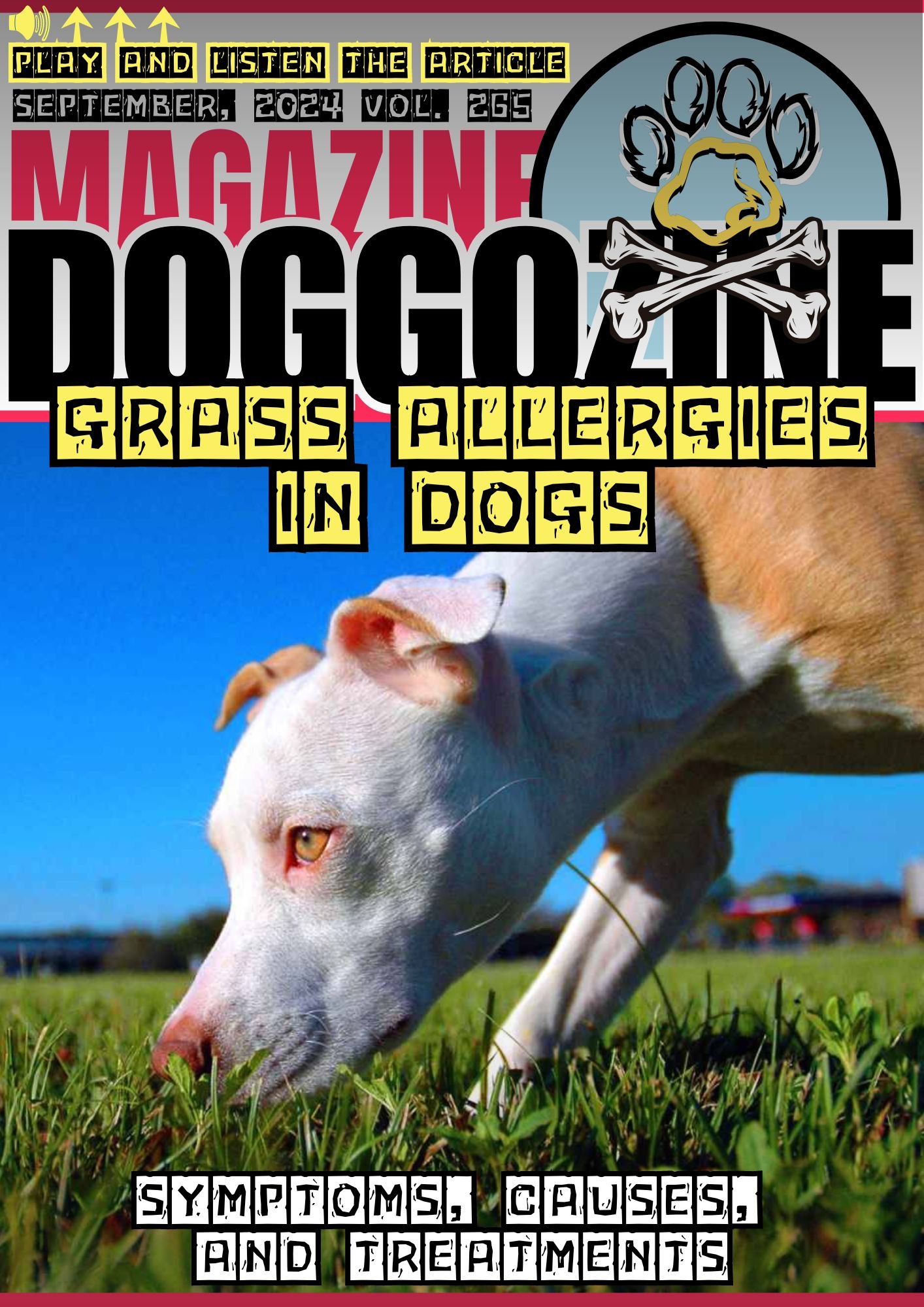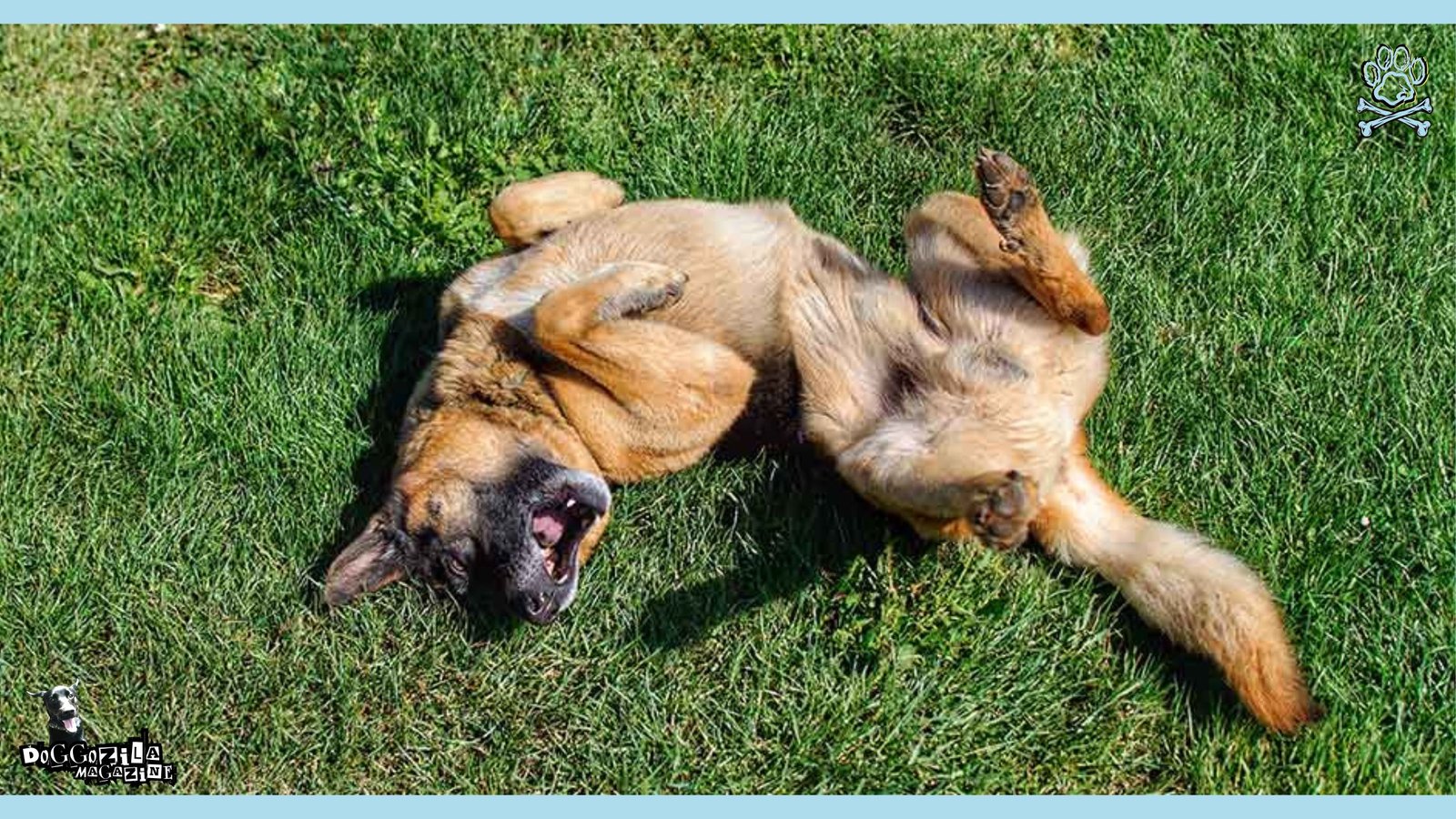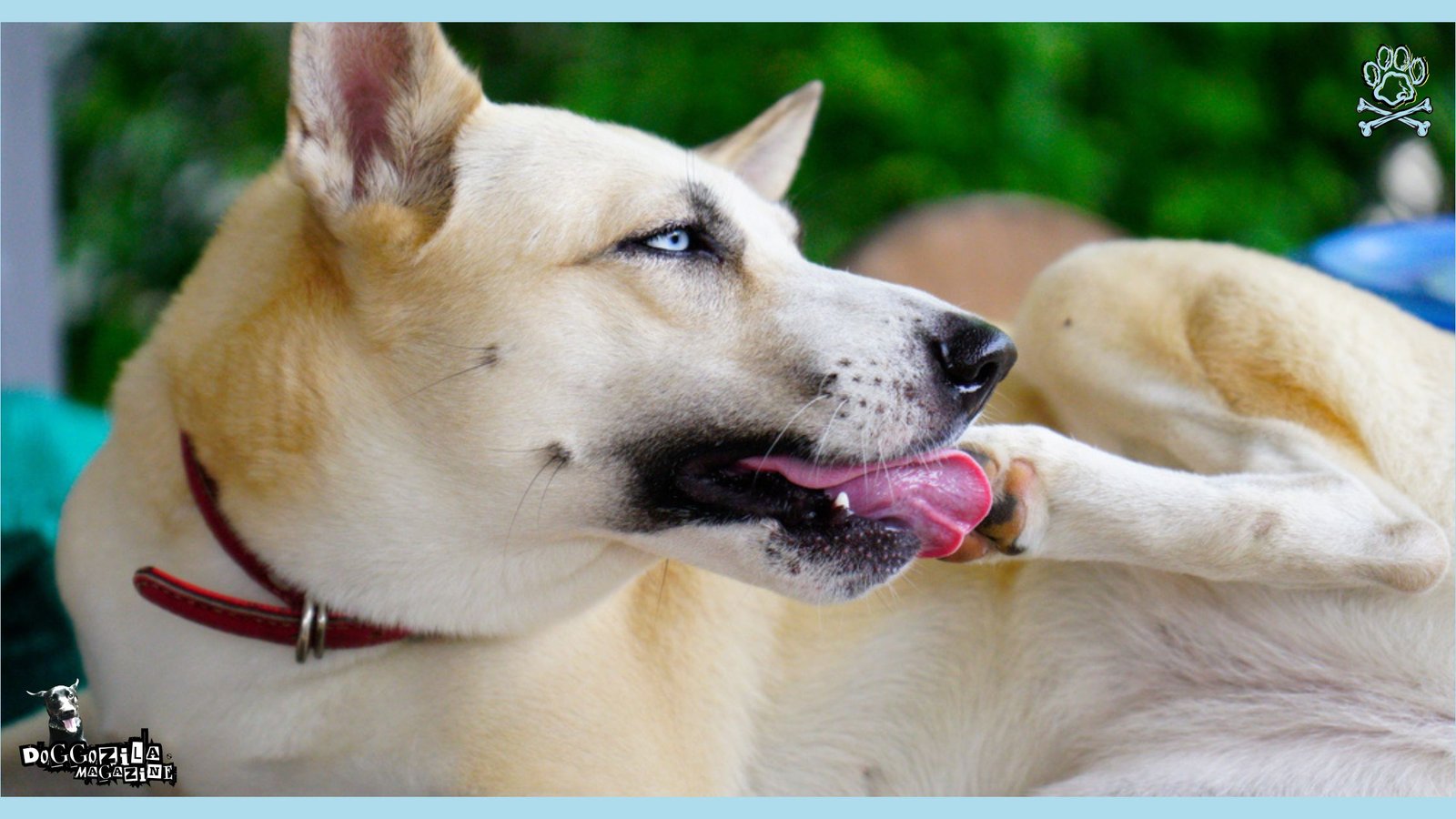
INTRODUCTION TO GRASS ALLERGIES IN DOGS
Grass allergies in dogs are a common concern among pet owners. Particularly during warmer months when exposure to grass is at its peak. These allergies occur when a dog’s immune system overreacts to proteins found in grass, leading to various health issues. This condition is categorized as either an inhalant allergy or a contact allergy. They are triggered by pollen and airborne particulates, while the latter is a response to direct contact with the grass.
Recognizing the Signs of Grass Allergies in Dogs
The significance of recognizing grass allergies in dogs lies in the potential impact on their overall well-being. Symptoms can range from mild irritation to severe discomfort, affecting a dog’s quality of life. Common signs include itching, redness, inflammation, and excessive dog licking, especially on the paws and belly. Some dogs may also experience respiratory issues, like sneezing or coughing.
This can indicate an allergic reaction to inhaled grass pollen. Understanding these symptoms is essential for timely intervention and treatment. Grass allergies in dogs often develop during their life, sometimes making it challenging to identify the onset. Various environmental factors, such as geographical location, seasonal changes, and even genetic predispositions, can play a role in the development of these allergies. Furthermore, grass allergies in dogs can exacerbate underlying conditions like dermatitis or other skin irritations.
This is making it crucial for pet owners to monitor their dogs closely during allergy season. As we delve deeper into the ramifications of grass allergies in dogs and explore effective management strategies, it becomes clear that awareness and education are paramount. By understanding the condition and its effects, dog owners can take proactive measures to protect their pets from discomfort and health complications associated with these common allergens.
🔑 Key Points: Common signs of grass allergies in dogs include itching, redness, inflammation, and excessive licking. Factors for developing these allergies could be the environment, seasonal changes, and genetic predispositions, can play a role in the development of these allergies.

CAUSES OF GRASS ALLERGIES IN DOGS
Grass allergies in dogs, also known as allergic dermatitis, are primarily attributed to the presence of grass pollen. This pollen is a fine powder released by grass species during their flowering season. This powder serves as a common allergen for many dogs. Unlike other allergens, grass pollen is airborne, which means that dogs can become sensitized to these irritants even if they are not in direct contact with the grass itself.
Understanding Why Do Dogs Develop Grass Allergies
It is crucial to understand that dogs may develop grass allergies based on few reasons. Most common are their genetic predisposition, immune system responses, and environmental exposure. There are numerous types of grasses that can trigger allergic reactions in dogs. Some grass species can be more problematic than others. Kentucky bluegrass, Bermuda grass, and ryegrass are among the most frequent culprits.
These grasses thrive in various climates and are widespread in both residential and commercial spaces, increasing the likelihood of exposure. That usually happens during peak pollen seasons. This typically happens in the spring and summer months. Than the concentration of these allergens in the air can escalate, exacerbating the symptoms in sensitive dogs. When a dog inhales grass pollen, their immune system may react as though it is a harmful substance. That could lead to an inflammatory response.
This response may manifest through various symptoms, such as itching, excessive scratching, and ear infections. Additionally, an allergic dog may develop secondary issues. Due to prolonged scratching and biting at irritated areas could lead to skin infections in dogs. Recognizing the causative factors behind the grass allergies in dogs is essential for pet owners. It’s important not only to mitigate exposure but also to create a comfortable environment for their furry companions.
🔑 Key Points: Grass allergies in dogs, also known as allergic dermatitis, are primarily attributed to the presence of grass pollen. Specific types of grasses, such as Kentucky bluegrass, Bermuda grass, and ryegrass, can trigger allergic reactions in dogs.

SYMPTOMS OF GRASS ALLERGIES IN DOGS
Grass allergies in dogs can manifest through a range of symptoms. These symptoms often are making it challenging for pet owners to identify the underlying issue. One of the most common indications is skin allergies, characterized by excessive scratching and licking. Dogs may experience inflammation, redness, and rashes, particularly on their paws, abdomen, and ears. The persistent itching associated with these skin allergies can lead to secondary infections and further complicate the issue. That is why a necessitating prompt attention from a veterinarian is needed.
Recognition And Intervention for The Symptoms Of Grass Allergies in Dogs
In addition to skin reactions, respiratory symptoms may also be observed. Dogs suffering from grass allergies often exhibit sneezing, coughing, or wheezing, similar to the symptoms seen in human seasonal allergies. This respiratory distress occurs as a result of inhaling pollen from grasses, leading to heightened sensitivities. As such, pet owners should be vigilant and observe any changes in their dog’s breathing patterns. These changes may indicate an allergic response.
Moreover, gastrointestinal symptoms can arise, including vomiting, diarrhea, or even loss of appetite, dogs won’t eat their food. While these signs may not be as overtly connected to grass allergies, they can contribute to an overall sense of discomfort in the affected dog. Recognizing these symptoms early is crucial for effective management. It allows pet owners to eliminate or reduce exposure to grass allergens. Interventions should be considered as well, such as antihistamines or allergy shots as advised by a veterinarian.
Overall, awareness and early recognition of these symptoms are key to improving the well-being of dogs suffering from grass allergies. By monitoring their pets closely and seeking appropriate medical guidance, owners can ensure their furry companions lead a comfortable life, even amidst the allergy season.
🔑 Key Points: Most common indications for grass allergies in dogs is skin allergies, characterized by excessive scratching and licking. Respiratory symptoms may also be observed and gastrointestinal symptoms can arise, including vomiting, diarrhea, or even loss of appetite.

DIAGNOSIS OF GRASS ALLERGIES IN DOGS
Diagnosing grass allergies in dogs involves a thorough process undertaken by veterinarians to ensure an accurate assessment. Initially, the veterinarian will conduct a detailed medical history review. This includes inquiries about the dog’s symptoms, any previous allergic reactions, and potential environmental exposures.
Observing The Symptoms for Diagnosis
Understanding the timeline of symptom onset and the specific grass types the dog is frequently exposed to can provide critical insights. Physical examinations are a fundamental component of the diagnosis. The veterinarian will closely inspect the dog for signs of allergic reactions. Usually they are skin irritations, hair loss, and excessive scratching. They may also look for secondary infections caused by the allergic response, which can complicate the condition further.
Observations made during this examination play a crucial role in differentiating grass allergies in dogs from other potential allergens, such as food, dust mites, or flea bites. To confirm a grass allergy diagnosis, veterinarians often utilize two primary methods: serum testing and intradermal skin testing.
Methods for Diagnosing Grass Allergies in Dogs
Serum testing involves analyzing the dog’s blood sample for the presence of specific antibodies associated with allergenic substances. This method can indicate a sensitivity to various environmental allergens, including certain types of grass. Conversely, intradermal skin testing is a more direct approach, where small amounts of allergens are injected intradermally to observe any reactions. A positive reaction suggests an allergy to the tested substance, which may include specific grass varieties.
It is also important to rule out other conditions that might mimic the symptoms of grass allergies. Conditions such as bacterial or fungal infections, hormonal imbalances, or skin parasites must be considered. A comprehensive diagnostic approach that includes both history-taking and testing will aid in formulating an effective treatment plan tailored to the dog’s specific needs.
🔑 Key Points: To confirm a grass allergy diagnosis, veterinarians utilize serum testing and intradermal skin testing. Serum testing is analyzing the dog’s blood sample. Intradermal skin testing is when allergens are injected intradermally to observe any reactions.

MANAGEMENT AND TREATMENT OPTIONS FOR GRASS ALLERGIES IN DOGS
Managing and treating grass allergies in dogs involves a combination of strategies aimed at alleviating symptoms and preventing exposure to allergens.
Antihistamines and Corticosteroids for Allergic Reactions in Dogs
Among the most commonly used treatments are antihistamines, which can help reduce itching and inflammation caused by allergic reactions. These medications work by blocking histamine receptors in the dog’s body, thereby mitigating the allergic response. It is essential to consult with a veterinarian to determine the appropriate antihistamine dosage and type, as some may be more effective for specific dogs than others.
Corticosteroids are another option for managing severe allergic reactions. These anti-inflammatory medications can provide quick relief for dogs experiencing intense itching or skin irritation. However, due to the potential side effects associated with long-term corticosteroid use, veterinarians typically recommend them for short-term relief during peak allergy seasons.
Healthy Diet for Managing Grass Allergies in Dogs
Dietary changes may also play a significant role in managing grass allergies. Some dogs may benefit from specialized diets that focus on reducing inflammation or bolstering the immune system. Incorporating omega-3 fatty acids, found in fish oil, can aid in promoting healthy skin and reducing allergic responses. Probiotics may also be beneficial, as they help maintain a balanced gut microbiome, which could positively influence the immune system.
Allergen avoidance strategies are crucial in managing grass allergies effectively. Pet owners can minimize their dog’s exposure to grass by creating a dedicated outdoor space that is free from allergens. Additionally, regularly bathing the dog with hypoallergenic shampoos can remove allergens from their skin and coat. Ensuring the dog’s living environment is clean and free from pollen can further mitigate the likelihood of allergic reactions. Implementing these management and treatment options can significantly improve the quality of life for dogs suffering from grass allergies.
🔑 Key Points: Most commonly used treatments for grass allergies in dogs are antihistamines and corticosteroids. Some dogs may benefit from adding specialized diets that focus on reducing inflammation or bolstering the immune system.

PREVENTATIVE MEASURES FOR GRASS ALLERGIES IN DOGS
Managing grass allergies in dogs requires proactive measures to minimize exposure to allergens. One of the most effective strategies is to carefully monitor and limit outdoor activities during peak pollen seasons, typically in spring and early summer. Scheduling walks and playtime earlier in the morning or later in the evening, when grass pollen counts are lower, can significantly reduce allergen exposure for your dog.
Clean Living Space for Your Dog
Maintaining clean living environments can be instrumental in alleviating allergy symptoms. Regularly washing your dog’s bedding, toys, and any fabric surfaces they frequent can help eliminate allergens that may have been tracked indoors. Additionally, implementing a cleaning routine that includes vacuuming and mopping floors using a high-efficiency particulate air (HEPA) filter can significantly diminish the amount of grass pollen present in your home.
Regular Grooming for Your Dog
Another preventative measure involves grooming your dog consistently. Brushing your dog’s coat after outdoor activities helps remove grass particles and pollen that may cling to their fur, reducing the chance of allergens entering your living space. Bathing your dog with a hypoallergenic shampoo once a week can further assist in washing away any remaining allergens.
Protective Dog Gear – Dog Booties
Using protective gear specifically designed for dogs can also provide a barrier against grass allergens. Dog booties can protect their paws from direct contact with grass that may contain pollen, while light coats can keep allergens off their skin. For particularly sensitive dogs, consider using a dog-safe antihistamine before engagements outdoors; this should always be done in consultation with your veterinarian. Ultimately, implementing these preventative measures can help safeguard your pet’s well-being and reduce the impact of grass allergies on their quality of life.
🔑 Key Points: Proactive measures to minimize exposure to allergens are regularly grooming your dog and cleaning his living space. Protective dog gear such as dog booties are also recommended.

FINAL THOUGHTS ABOUT GRASS ALLERGIES IN DOGS
In summary, awareness of grass allergies in dogs is crucial for pet owners. These allergies can significantly impact a dog’s quality of life, leading to symptoms such as itching, redness, and discomfort. Identifying the signs early can facilitate timely intervention and appropriate treatment, ultimately benefiting the dog’s overall well-being.
Specific Types of Grasses and Environmental Factors Can Be Cause for Grass Allergies in Dogs
Understanding the root causes, including specific types of grasses and environmental factors, can empower pet owners to take proactive steps. Consulting with a veterinarian is essential in creating an effective management plan tailored to the individual needs of the dog.
Personalized advice can help determine the most appropriate course of action, whether those entails adjusting the dog’s environment, implementing medication, or exploring dietary changes. Veterinarians can guide pet owners on the specific grasses contributing to allergies and suggest preventative measures that can be taken during peak allergy seasons.
Dog Owners Should Be Aware, Proactive and Attentive
Moreover, remaining informed about effective treatments, such as antihistamines, topical therapies, and immunotherapy, is vital. Each dog’s response to treatment may vary, which underscores the necessity for ongoing communication with veterinary professionals to monitor progress and adjust therapies as necessary.
Ultimately, while grass allergies present challenges for both dogs and their owners, informed and diligent management can lead to significant relief. By being proactive and attentive, pet owners can help ensure their furry companions lead healthy, comfortable lives free from the discomfort caused by grass allergies in dogs.










